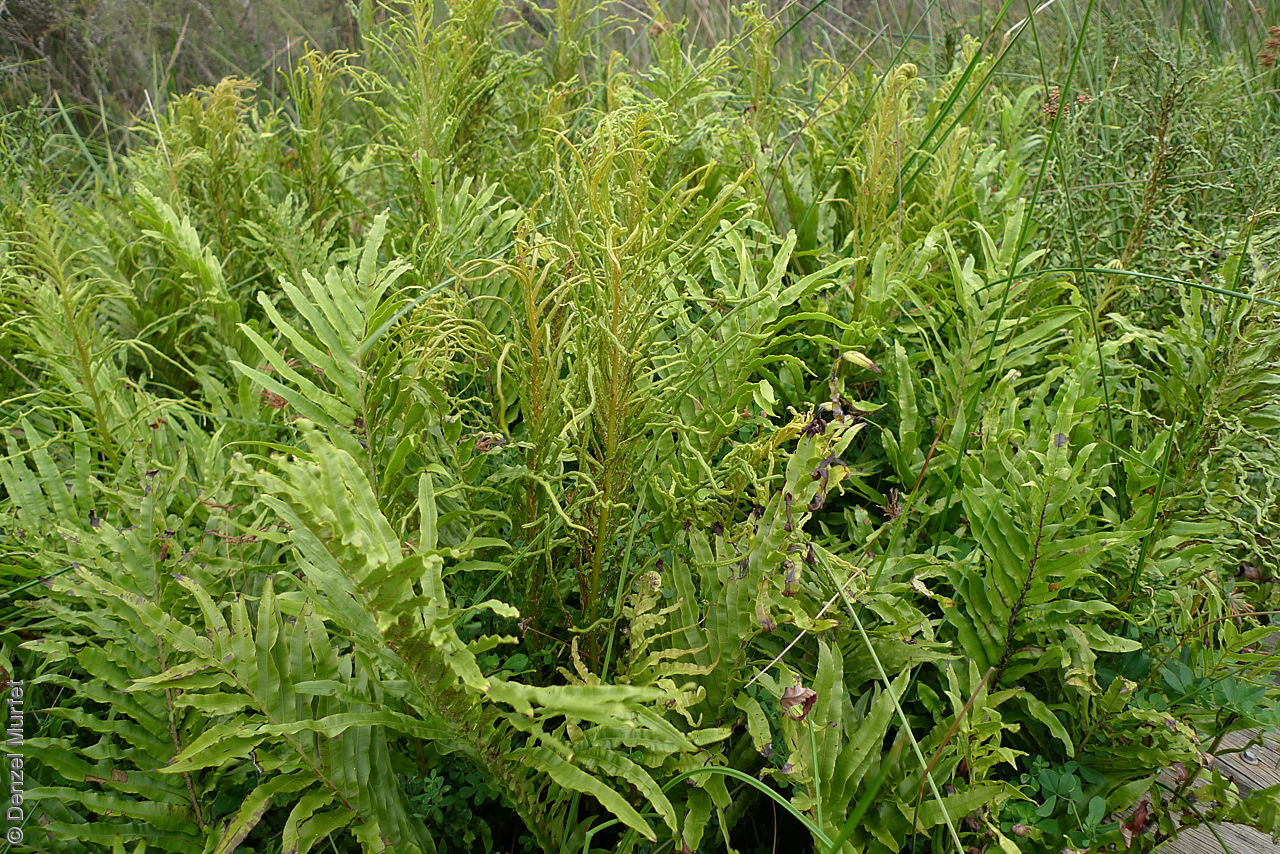
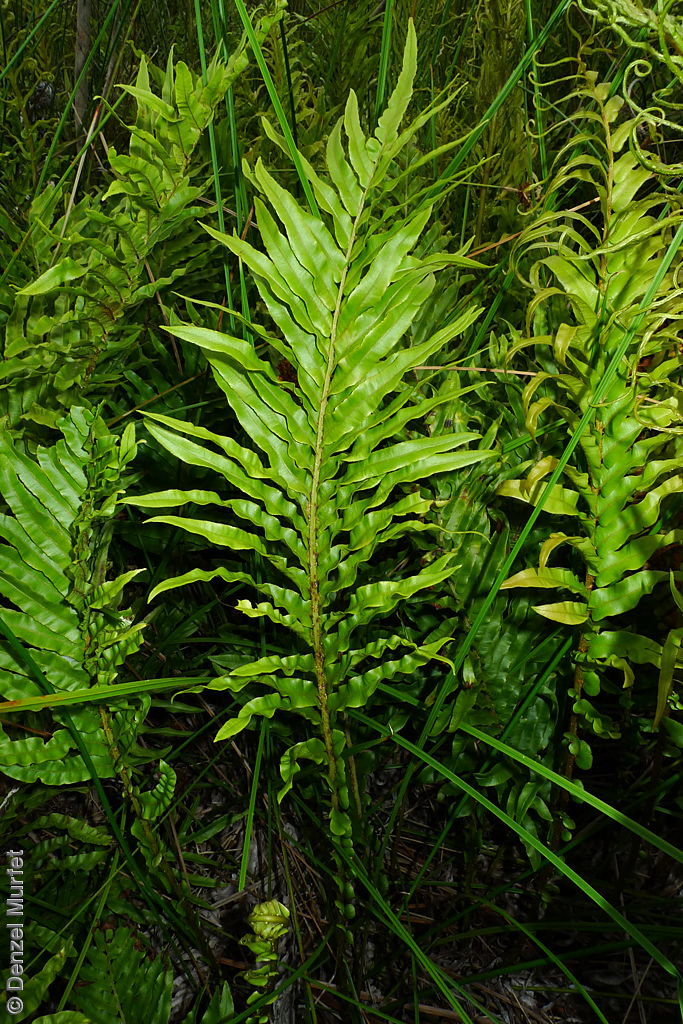
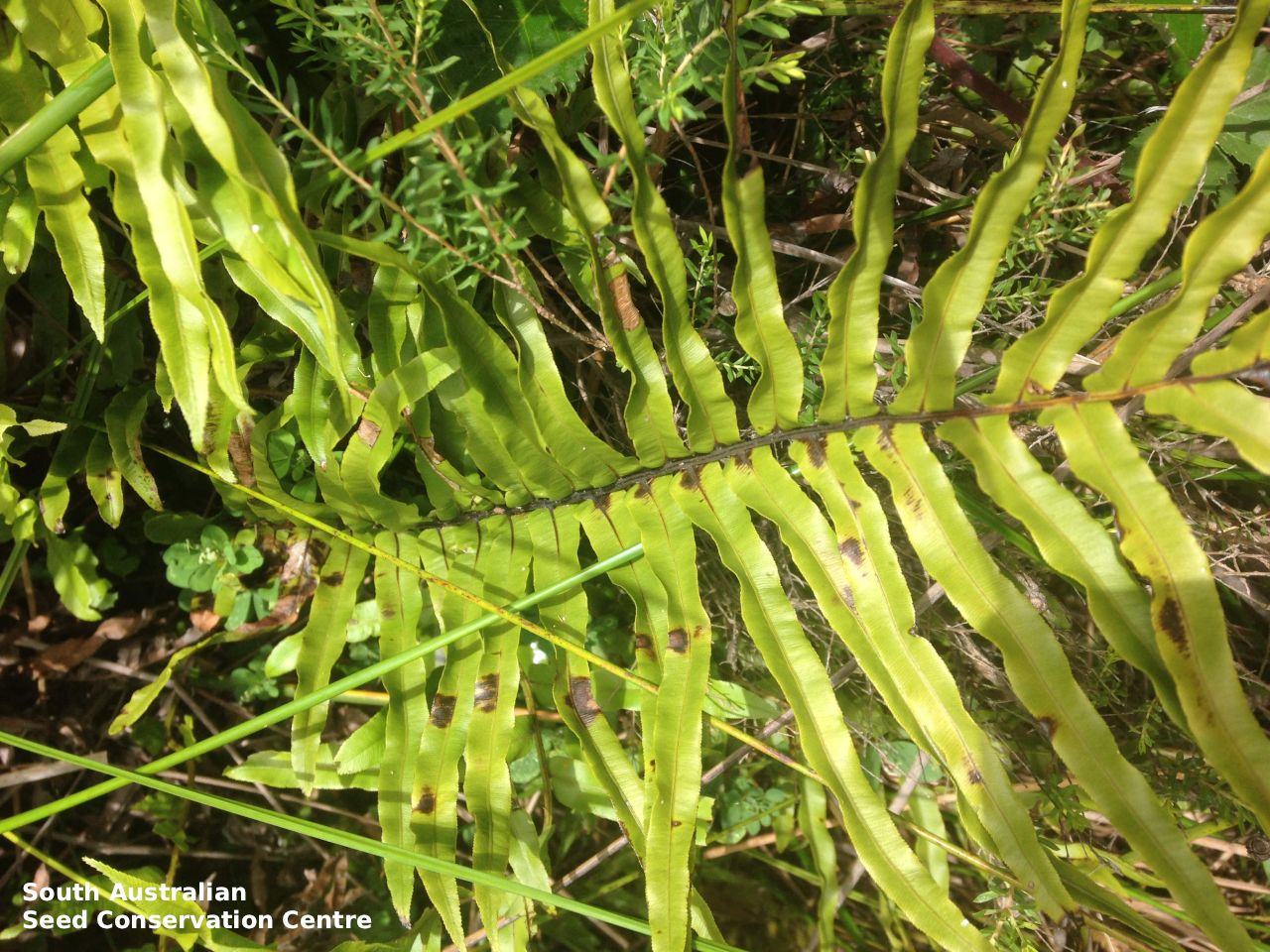
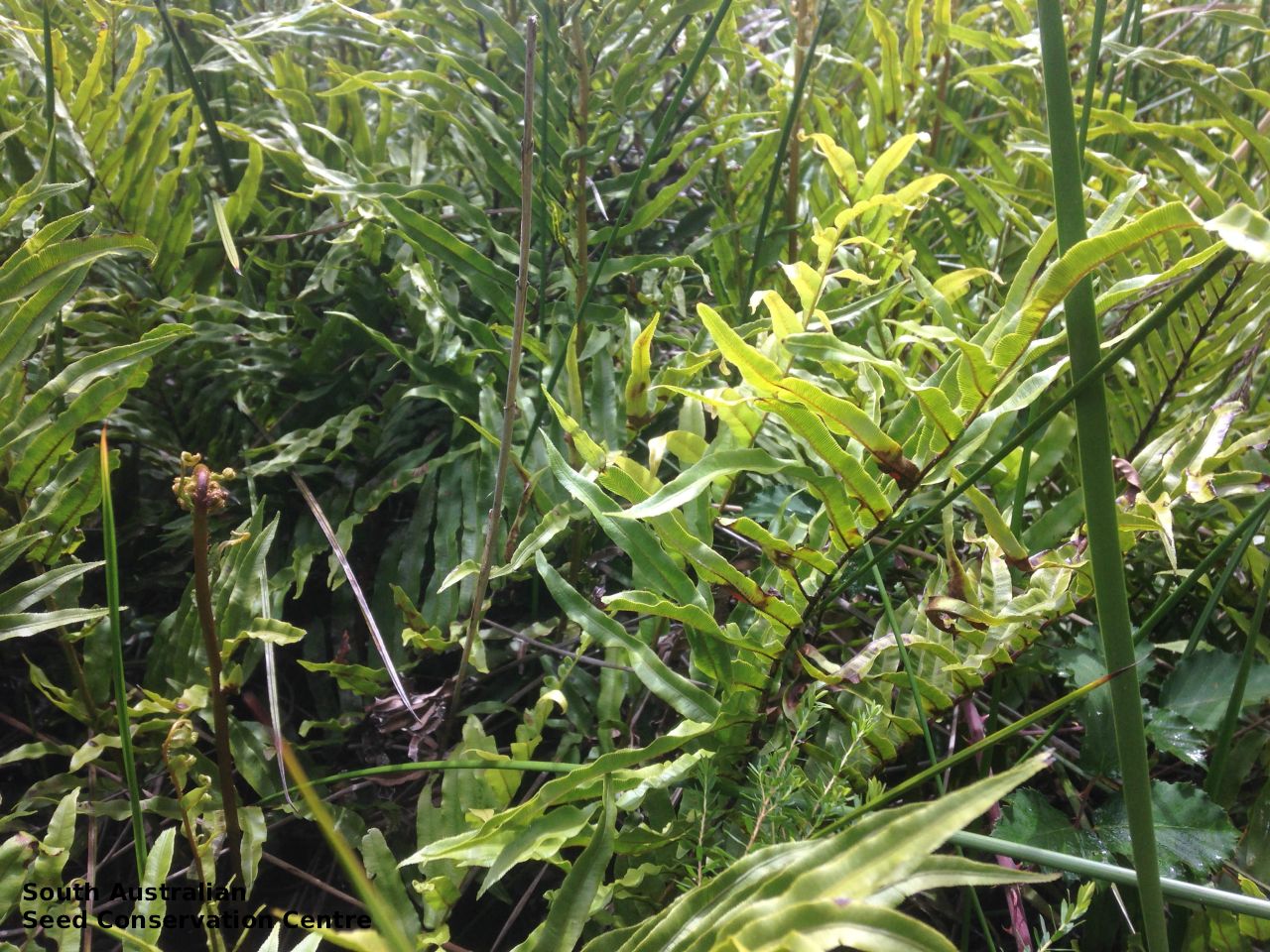
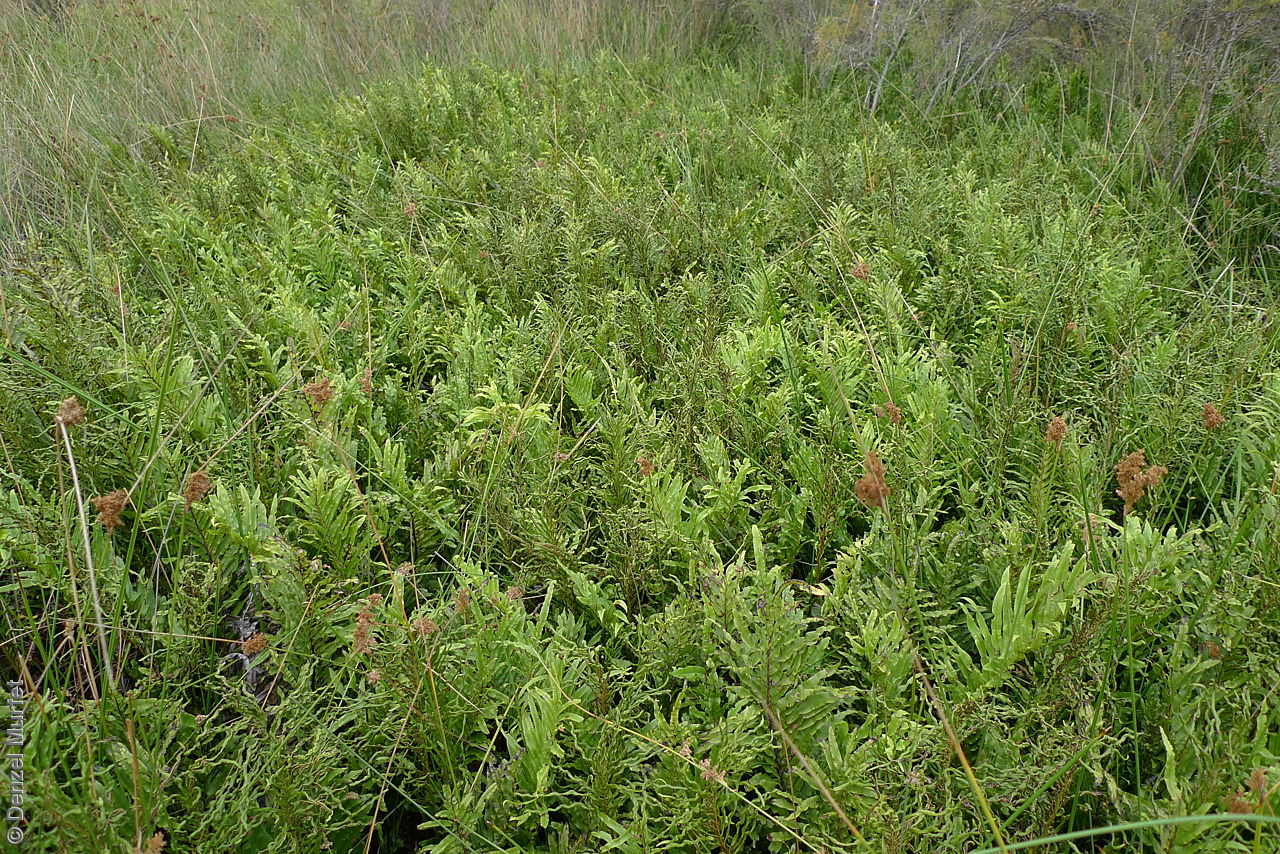
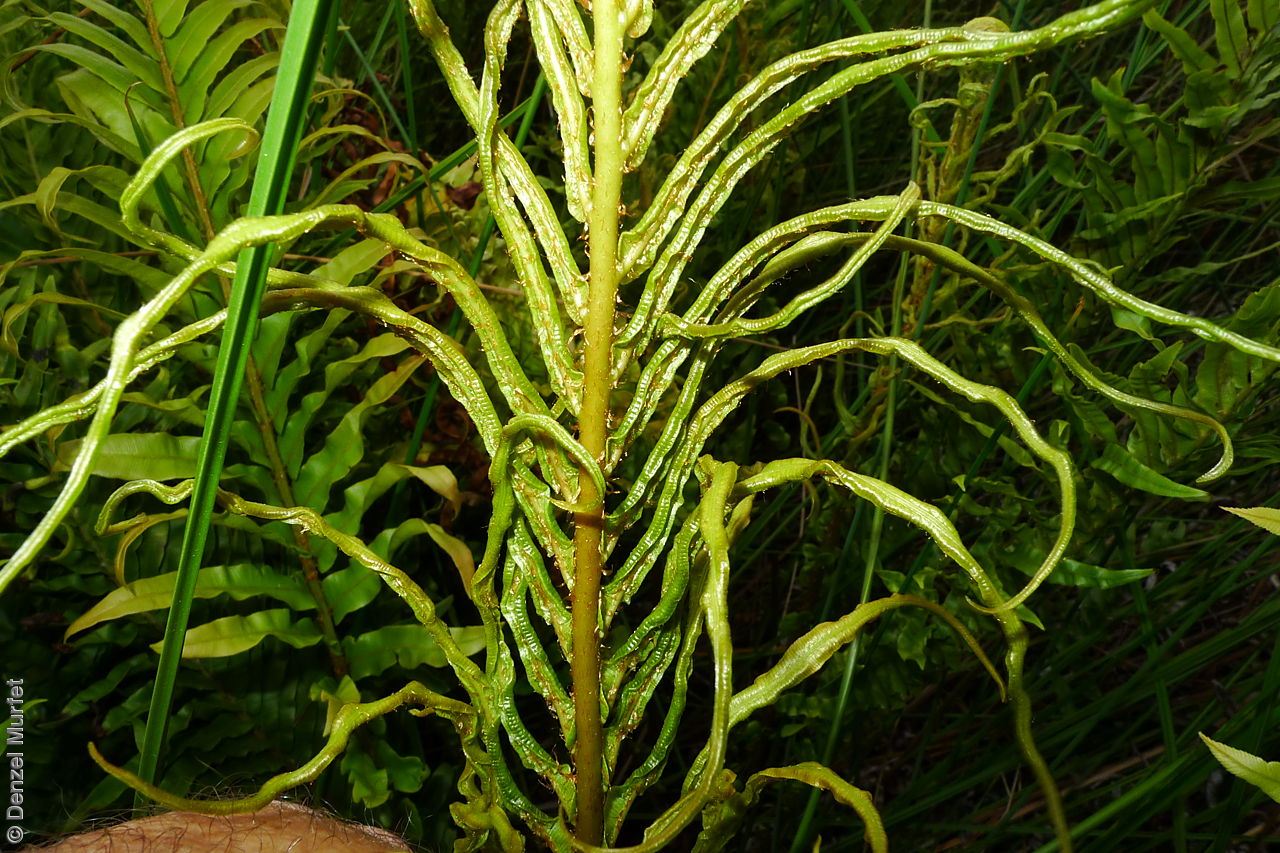


Botanical art
Prior names
Parablechnum minus
Stegania minor
Blechnum capense, partly
Common names
Soft Water-fern
Etymology
Blechnum from the Greek 'blechnon', the name for ferns in general. Minus from the Latin 'minor' meaning smaller, a reference to the small size of the plants of this species first collected by Robert Brown.
Distribution and status
Found only in the southern Mount Lofty Ranges in South Australia, growing in swamps, along streams or on banks, often occuring with B. wattsii. Also found in Queensland, New South Wales, Victoria and Tasmania. Native. Uncommon in South Australia. Common in the other States.
Herbarium regions: Southern Lofty, South Eastern, Green Adelaide
AVH map: SA distribution map (external link)
Plant description
A large, erect fern to 1 m tall with slow-creeping and branching rhizome, sometime forming a short trunk. Fronds erect, to 1 m or more long, variable in texture from membranous to fairly harsh, young fronds pinkish. Lamina of the frond is divided into pinnae which are longer near the centre of the frond, decreasing in size towards both the tip and base, sterile and fertile fronds dissimilar with fertile fronds frequently drooping, similar in size to sterile fronds. Fruits are dark brown sori covering the underside of lamina on each side of midvein. Seeds are ripe spores are dark brown or black.
Seed collection and propagation
Look under the fronds and collect ones with spores and place in a seal paper bags to prevent spores from fulling out. Leave fronds in the paper bag to dry. The spores will fall off naturally or give the fronds a gentle shake. Use a very fine sieve to separate any unwanted material. Be careful as the spores are very fine. Store spores in an air tight container in a cool and dry place or in a -20oC freezer.